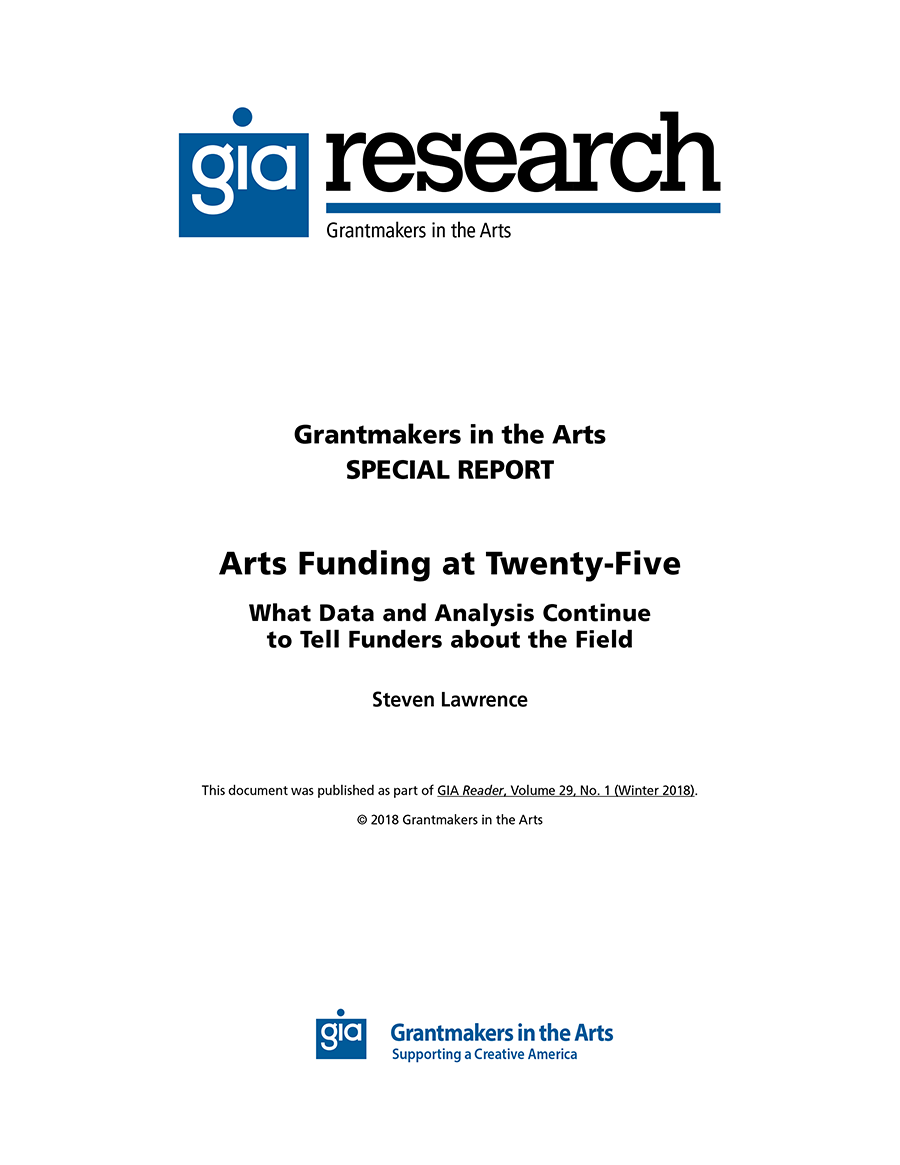Capitalization
Grantmakers in the Arts defines capitalization as “the accumulation of the resources an organization needs to fulfill its mission over time,” specifically with regard to financial health. In response to the observation that it has been the norm for the nonprofit arts sector to be poorly capitalized, an issue which disproportionately affects ALAANA organizations, GIA embarked on the National Capitalization Project (NCP) in 2010. Since its launch, GIA has provided resources, conferences sessions, publications, and workshops on nonprofit capitalization. GIA’s Conversations on Capitalization and Community are specialized workshops, held separately for funders and nonprofit grantees, focusing on what each group can do to support the financial health of nonprofit arts and culture organizations. These workshops are available upon request.
Over the course of decades of working with nonprofits, particularly arts- and community-based organizations, we’ve seen an unfortunate pattern emerge. With the regularity of waves, many nonprofits move in and out of cycles of fiscal instability. The factors are familiar and well-known: drops in earned revenue for various reasons, often out of leaders’ control; shifts in the priorities of donors; turmoil in staffing and leadership; and restrictions placed on funds.
Read More...In a recent piece, Adam Fong, Program Officer in Performing Arts at the William and Flora Hewlett Foundation, reflects on a cluster of "adaptation grants" Hewlett put in place to help ensure Bay Area arts organizations "have sufficient resources to adapt to challenges both arising from and exacerbated by the pandemic."
Read More...In the fall of 2019, SMU DataArts — in partnership with Theatre Communications Group (TCG) — released a paper examining the financial health of nonprofit theaters in the years leading up to, during, and following the Great Recession. With data pointing to an economic slowdown, the researchers explored the financial preparedness of US theaters to weather the coming period of uncertainty and turbulence.
Read More...While some grantmakers "have moved toward the participatory model by bringing advisory panels on board," the North Star Fund, which identifies as a social justice fund that supports grassroots organizing and communities building power in New York City and the Hudson Valley, has "turned over most of its grantmaking decisions to committees composed of activists and others from the neighborhood," as a piece by The Chronicle of Philanthropy states.
Read More...Museums embracing sustainable investing: an article in Artsy by Anna Raginskaya, a financial advisor with the Blue Rider Group at Morgan Stanley, makes that case saying, "As endowed organizations, museums have a powerful voice that can parallel the stories told within their galleries."
Read More...The National Center for Arts Research at Southern Methodist University (NCAR) has found the majority of arts and cultural organizations have "precariously low levels of working capital," or resources available to cover day-to-day operating needs.
Read More...Suddenly, a cash grant changes everything. Through illustrative examples of artists who have received considerable cash grants and the experiences of foundations that give them, a recent New York Times article tackles how getting a substantial cash grant can alter most artists' lives and the questions that come after awards of this kind.
Read More...Download:
![]() Arts Funding at Twenty-Five (318Kb)
Arts Funding at Twenty-Five (318Kb)
Introduction
The easy convenience of typing a few key words into a search box and promptly being immersed in data can make one forget that this capability has existed for a remarkably short period of time. Just twenty-five years ago — a point in time well within the recollection of most members of the arts and culture sector — Stanley N. Katz, then president of the American Council of Learned Societies, observed, “the serious study of arts philanthropy is less than a generation old, and we are just beginning the sorts of data collection and analysis…we need to make sound judgments about the field.”1
Read More...From Philanthropy News Digest:
Nearly 80 percent of impact investors believe they have a responsibility to ensure that their investments create lasting impact, a report from the Global Impact Investing Network finds.
Based on interviews with impact investors and entrepreneurs, the report, Lasting Impact: The Need for Responsible Exits (44 pages, PDF), outlines the strategies investors employ throughout the investment lifecycle to ensure long-term success and sustainability of the projects they invest in.
The National Center for Arts Research (NCAR) at Southern Methodist University has released a report detailing financial health of arts organizations in the US. The report examines organizational bottom lines using data collected from over 4,800 organizations between 2013 and 2016. Overall, the report shows that it has become increasingly difficult for arts and cultural organizations to break even, a trend that is particularly alarming given the current period of economic growth in the US.
Read More...
